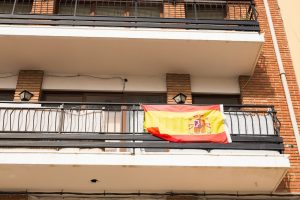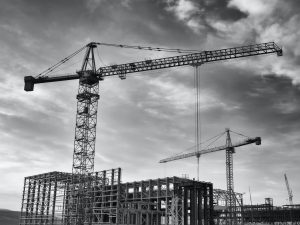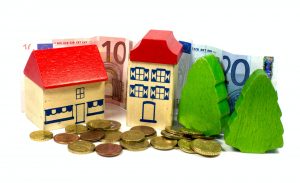
Sale and rental prices fell 0.2% in August
In August, the price of second-hand housing in Spain fell by 0.2%. The annual variation was more significant falling 7.9% since August 2022. This brings the average cost per square metre to €2,145. The monthly fall seen in August is the first fall in the last two years.
“Historically, the month of August usually shows moderation, due to the summer season in which demand slows down. However, we could be at the beginning of a slowdown trend that becomes more stable throughout the last four months and materializes in communities with less intense demand. At the moment, housing prices continue to show significant increases at the national level and even more worrying in the most stressed autonomies such as the Canary Islands, the Balearic Islands, Navarra or Valencia. It is worth remembering that there continues to be a shortage of housing stock in the market, exacerbated by the stoppage and delay of new construction promotions,” explained María Matos, Director of Studies for Fotocasa.
Autonomous Communities
When looking at the current prices compared to the same time last year, we see 17 communities where prices increased. Six of those communities saw increases above 10%, specifically, the Canary Islands (+23.5%), the Balearic Islands (+18.7%), Navarra (+13.4%), Valencia (+11.2%), La Rioja (+10.7%) and Murcia (+10.5%).
Other communities to see increases include Andalusia (+7.5%), Cantabria (+7.1%), Aragon (+4.7%), Catalonia (+4.6%), Madrid (+4.4%), Galicia (+4.2%), the Basque Country (+3.9%), Extremadura (+3.5%), Castilla-La Mancha (+3.1%), Asturias (+2.8%) and Castilla y León (+1.6%).
We see the most expensive second-hand housing in Spain in the Balearic Islands and Madrid, with average prices of €3,778 p/m² and €3,508 p/m², respectively. They are followed by the Basque Country (€3,013 p/m²), Catalonia (€2,756 p/m²), the Canary Islands (€2,310 p/m²), Navarra (€2,027 p/m²), Andalusia (€1,910 p/m²), Cantabria (€1,876 p/m²), Aragon (€1,705 p/m²), Galicia (€1,697 p/m²), Comunitat Valenciana (€1,695 p/m²), La Rioja (€1,645 p/m²), Asturias (€1,639 p/m²), Castilla y León (€1,464 p/m²), Region of Murcia (€1,281 p/m²) , Extremadura (€1,199 p/m²) and Castilla-La Mancha (€1,172 p/m²).
Prices by Province
In 94% of the 50 provinces, the year-on-year price of housing in Spain increased in the month of August. In 14 provinces the increases exceeded 10%, specifically in Santa Cruz de Tenerife (+32.1%), the Balearic Islands (+18.7%), Alicante (+15.7%), Málaga (+15.5%), Soria (+15.2%), Teruel (+14.3%), Navarra (+13.4%), Las Palmas (+13.0%), Tarragona (+12.0%), Cuenca (+11.2%), Cádiz (+10.8%), La Rioja (+10.7%), Murcia (+10.5%) and Lleida (+10.3%).
Regarding prices, the Balearic Islands is the most expensive province with €3,778 p/m², followed by Madrid (€3,508 p/m²) and Gipuzkoa (€3,396 p/m²), among others. The only province with a price per square meter below 1,000 euros is Ciudad Real with €948 p/m².
Rental Prices
The price of rental housing in Spain also fell by 0.2% in August, when compared to July. When comparing to the same month in 2022, prices increased by 3.4%. This places the average monthly cost of renting to €11.59 p/m².
Although it shows an increase, it is the smallest increase seen in the last 10 months. Rental price increases have slowed for several months and have moved away from double-digit increases.
“A slight decrease is detected at the national level in rental prices. However, rental prices continue to skyrocket in the most stressed autonomous communities and have once again reached historic highs in nine of them, with very large increases of over 10 and up to 30%. At this time, the available residential rental supply is so low that the pressure of demand pushes the price up, causing it to set price records once again. A very significant volume of properties has been sold, they have been converted to tourist rentals or remain empty“, Matos explained.
Rental Prices in Autonomous Communities
If we compare the price of renting a house in Spain to those of a year ago, we see that 16 communities saw increased prices in July. In five communities the increases exceeded double digits, specifically in the Balearic Islands with a staggering increase of 30.1%. Following were the Canary Islands (19.1%), Cantabria (16.6%), Comunitat Valenciana (13.7%), Madrid (10.6%), Andalusia (8.7%), Galicia (8.4%), Catalonia (8.1%), Basque Country (7.6%), Navarra (5.3%), Asturias (4.8%), Castilla y León (4.8%), Extremadura (3.5 %), La Rioja (2.7%), Aragón (2.3%) and Region of Murcia (0.7%). The only community that saw a decrease compared to the previous year is Castilla-La Mancha with -2.9%.
In July 2023, nine communities exceed the maximum rental prices per square meter per month. The areas of Spain with the highest monthly prices in the entire historical series are: the Balearic Islands (€17.17 p/m²), Madrid (€17.02 p/m²), Catalonia (€15.99 p/m²), the Canary Islands (€12.90 p/m²), Asturias (€8.92 p/m²), Galicia (€8.56 p/m²), La Rioja (€8.52 p/m²), Castilla y León (€8.38 p/m²) and Extremadura (€6.43 p/m²).
Regarding the ranking of Communities by the monthly cost of rental housing in Spain, the most expensive are the Balearic Islands and Madrid, with prices of €17.17 p/m² and €17.02 p/m², respectively. They are followed by six more communities with prices above €10.00 and they are: Catalonia (€15.99 p/m²), the Basque Country (€14.54 p/m²), Cantabria (13 €.04 p/m²), the Canary Islands (€12.90 p/m²), Valencia (€11.37 p/m²) and Navarra (€10.91 p/m²).
Renting by Province
In 44 of the provinces, the year-on-year price of rental housing increased in July 2023, except for Albacete, Palencia, Araba – Álava, Huelva and Cuenca. Increases of more than 10% occur in 18 provinces, according to data from Fotocasa.
The order of the provinces with interannual increases greater than 10% are: the Balearic Islands (30.1%), Santa Cruz de Tenerife (19.5%), Las Palmas (19.4%), Tarragona (18.1%), Alicante (17.9%), Zamora (17.3%), Cantabria (16.6%), Segovia (15.6%), Valencia (15.2%) and Guadalajara (13.5%).
18 provinces exceed a cost of 10.00 euros per square meter per month. The three most expensive provinces are Barcelona with €17.45 p/m², followed by the Balearic Islands with €17.17 p/m² and Madrid with €17.02 p/m².















